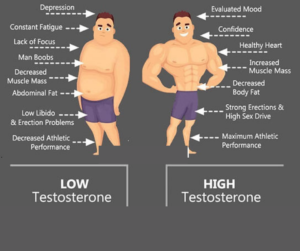Semaglutide Companion Guide
Welcome to your comprehensive companion guide for a healthier lifestyle while using Semaglutide. This guide will provide you with a tailored diet plan, insights into intermittent fasting, a workout plan, and general tips to help you make the most of your journey.
What is Semaglutide?
A lot of you are taking Semaglutide, but I want to make sure you understand exactly what Semaglutide is. Semaglutide is a medication primarily used for the treatment of type 2 diabetes and, more recently, for weight management in individuals with or without diabetes. It works by mimicking a hormone (grehlin). High levels of ghrelin lead to an increase in appetite and food intake. Semaglutide reduces grehlin potentially leading to weight loss.
Semaglutide also delays gastric emptying, which slows down how quickly the stomach empties, which makes you feel fuller for longer.
Keep this in mind when starting your Semaglutide plan, so you can know exactly how this medication is working.
I usually recommend HIGH PROTEIN intermittent fasting with all of our Semaglutide Gameplans, but here is an example of a simple NON INTERMITTENT FASTING PLAN
CHOICE ONE OPTION FROM EACH: BREAKFAST, LUNCH, DINNER, AND SNACK..
Sample Diet Plan
Breakfast
Option 1: Greek yogurt with berries and a sprinkle of chia seeds
Option 2: Scrambled eggs with spinach and whole-grain toast
Option 3: Protein smoothie with banana, spinach, almond milk, and a scoop of protein powder
Lunch
Option 1: Grilled chicken salad with mixed greens, cherry tomatoes, cucumber, and a vinaigrette dressing
Option 2: Quinoa bowl with black beans, corn, avocado, and salsa
Option 3: Turkey and hummus wrap with whole-grain tortilla and mixed vegetables
Dinner
Option 1: Baked salmon with roasted Brussels sprouts and sweet potato
Option 2: Lentil soup with a side of whole-grain bread
Option 3: Stir-fried tofu with broccoli, bell peppers, and brown rice
Snacks
Option 1: Almonds and a piece of fruit
Option 2: Carrot and celery sticks with hummus
Option 3: Cottage cheese with pineapple chunks
WHY CHOICE INTERMITTENT FASTING?
Intermittent fasting involves cycling between periods of eating and fasting. It can complement the effects of Semaglutide by helping to regulate blood sugar levels and potentially assisting with weight loss. Common fasting methods include:
- 16/8 method: Fast for 16 hours and eat during an 8-hour window
- 5:2 method: Eat normally for 5 days a week, restrict calories to 500-600 for 2 non-consecutive days
- Eat-Stop-Eat: Perform a 24-hour fast once or twice a week
Intermittent fasting, when combined with the use of the drug Semaglutide, may enhance weight loss efforts for several reasons:
- Increased Insulin Sensitivity: Intermittent fasting can improve insulin sensitivity, which helps in better blood sugar control. Semaglutide also works by mimicking the action of an incretin hormone, which helps lower blood glucose levels. The combination can therefore amplify the body’s ability to manage blood sugar, potentially leading to reduced appetite and lower calorie intake.
- Hormonal Effects: Fasting can lead to changes in hormone levels that facilitate weight loss. For instance, it can increase levels of norepinephrine, which can boost metabolism. Semaglutide, on the other hand, reduces the hunger hormone ghrelin and increases feelings of fullness. Together, they can result in a more pronounced reduction in hunger and calorie intake.
- Fat Burning: During fasting periods, the body is forced to turn to stored fat for energy once glucose stores are depleted. Semaglutide also promotes weight loss by slowing gastric emptying and reducing appetite, which may lead to greater fat utilization.
- Reduced Caloric Intake: Intermittent fasting inherently limits the time window for eating, which typically leads to a reduction in overall caloric intake. Semaglutide’s appetite-suppressing effects further aid in reducing the likelihood of overeating, contributing to a calorie deficit essential for weight loss.
- Improved Dietary Choices: Intermittent fasting can encourage more mindful eating practices and better food choices when the eating window arrives. With the added effect of Semaglutide making individuals feel fuller for longer, there is a greater chance that when individuals do eat, they will choose nutrient-dense, lower-calorie foods.
Next thing is working out. The goal is to burn more calories than you take in, so this means an effective workout is anything that helps you burn calories. Regular physical activity can enhance the weight management effects of Semaglutide. Aim for a mix of cardiovascular, strength training, and flexibility exercises.
Sample of a Simple Workout Routine
Monday
Cardio: 30 minutes of brisk walking or cycling
Strength: Bodyweight exercises (push-ups, lunges, squats) – 3 sets of 10-15 reps
Tuesday
Flexibility: Yoga or stretching routine – 30 minutes
Wednesday
Cardio: Walk or Light Jog – 30 minutes
Strength: Dumbbell workout (bicep curls, tricep extensions, shoulder press) – 3 sets of 10-15 reps
Thursday
Rest or light activity like a leisurely walk
Friday
Cardio: HIIT session – 20 minutes
Strength: Resistance band exercises (band pull-aparts, rows, leg presses) – 3 sets of 10-15 reps
Saturday
Flexibility: Pilates class or flexibility routine – 30 minutes
Sunday
Rest or active recovery (e.g., easy hike, casual bike ride)
General Tips for your Semaglutide Plan
- Stay well-hydrated; aim for at least 8 glasses of water per day.
- Get adequate sleep; 7-9 hours per night is ideal.
- Monitor your progress and side effects with a diary or app.
- Maintain your regular follow ups (Wednesday)
- Take your time and don’t be too hard on yourself. Your taking the right step to a BETTER YOU, so it’s going to happen. DO NOT QUIT BEFORE YOU ACHIEVE YOUR GOAL.
Remember, we’re always here to help. Keep up the good work.




